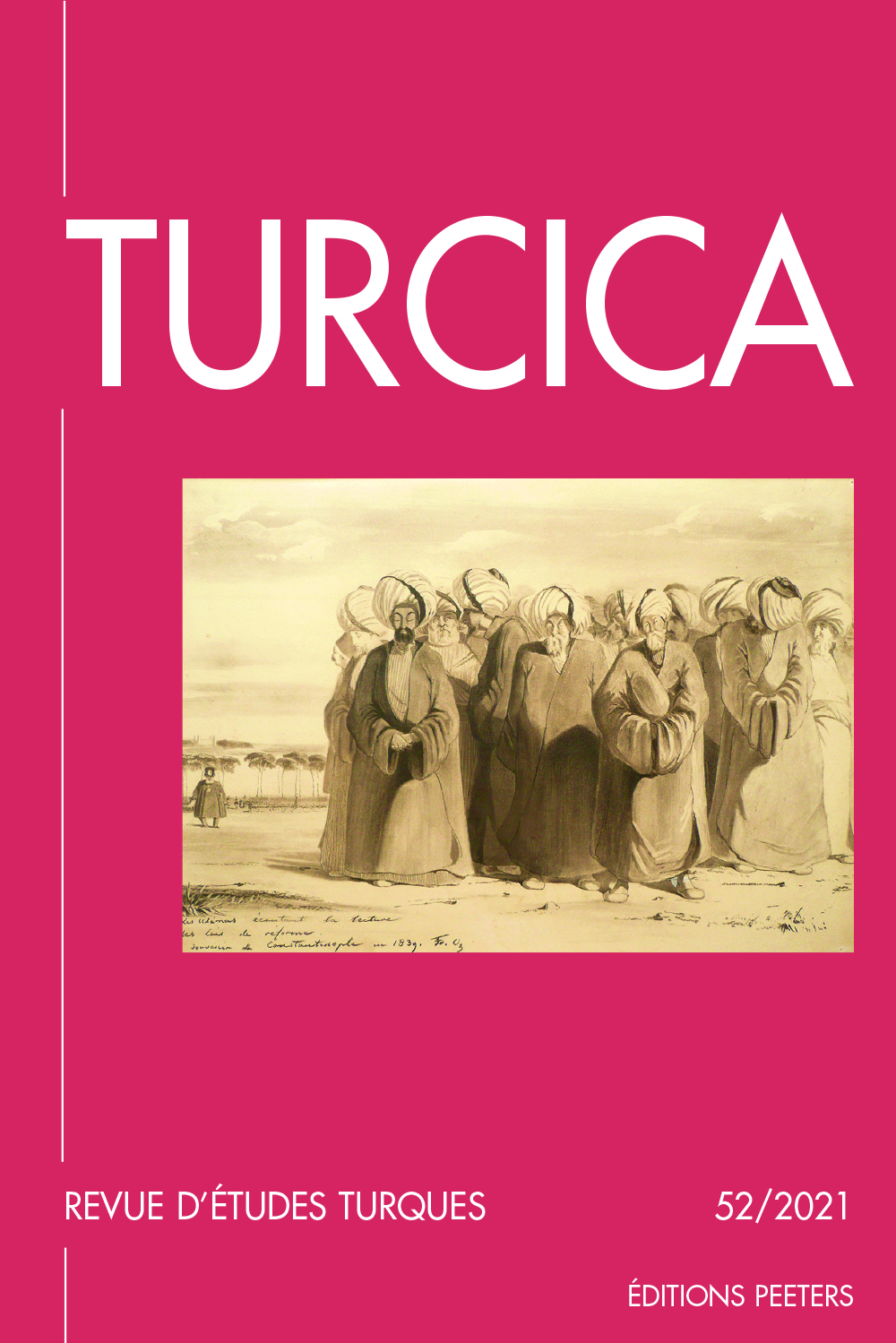 previous article in this issue previous article in this issue | next article in this issue  |

Preview first page |
Document Details : Title: Tarḫāniyāt/Menemen, de Byzance l'Empire ottoman Author(s): BELDICEANU-STEINHERR, Irène , GANCHOU, Thierry Journal: Turcica Volume: 38 Date: 2006 Pages: 47-122 DOI: 10.2143/TURC.38.0.2021270 Abstract : Deux documents en latin du milieu du XVe siècle mentionnant une ville en Asie Mineure de l’Ouest, inconnue par ailleurs dans les sources occidentales, sont à l’origine de l’article. Il est divisé en deux parties. Dans la première, on traite le sujet du point de vue de la géographie historique. C’est à travers la documentation ottomane, essentiellement des registres de recensement, que l’on connaît la ville, dont le nom est transcrit en ottoman sous la forme Tarḫāniyāt. On l’appelait aussi Menemen, nom qu’elle porte encore aujourd’hui. L’article exploite d’abord la documentation ottomane, très détaillée, puis la documentation byzantine à la recherche du toponyme, puisqu’il paraît à première vue évident qu’il faille imputer sa fondation à la famille aristocratique des Tarchanéiôtai, recherche qui s’est avérée infructueuse. En fait, si la famille est attestée dans la région à partir de l’empire de Nicée, en revanche on ne trouve aucune trace de la ville dans les sources byzantines, ce qui implique son émergence à l’époque post-byzantine. La deuxième partie est consacrée à un litige entre des marchands génois de Chio et un Grec nommé Pétros Sophianos, habitant de Phocée la Vieille et citoyen génois. L’appel à la juridiction ottomane par Pétros Sophianos pour rentrer dans ses fonds, suivi de l’extorsion d’argent et de la confiscation de marchandises de la part des agents de la Porte, donne une dimension politique à une simple affaire de dettes. This article concerns two Latin documents dating from the middle of the 15th century, mentioning a western Minor Asian town never mentioned elsewhere in western sources. It consists of two different parts∞: The first part deals with the historical geography of the place. The town is known through ottoman documentation, mostly through census registers. In Ottoman, its name is transcribed under the form Tarḫāniyāt. It was also called Menemen, the name being still in use today. To start with, our article investigates the very detailed Ottoman documentation, then the Byzantine documentation, searching for the toponym, as it seems obvious at first sight that its foundation should be attributed to the aristocratic family Tarchanéiôtai; this research proved unsuccessful. In fact, if the family is attested in the region since the Nicaea Empire, there is no trace however of the town in the Byzantine sources, which implies its emergence at the post Byzantine period. The second part deals with a litigate between Genovese merchants from Chios and a Greek one named Petros Sophianos, living in Ancient-Phocaea and Genovese citizen. The appeal to the Ottoman jurisdiction by Petros Sophianos to get his money back, followed by money extortion and confiscation of the goods by agents of the Porte, gives a political dimension to a simple matter of debts. |
 |


